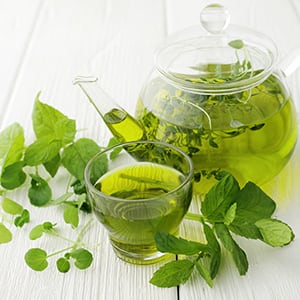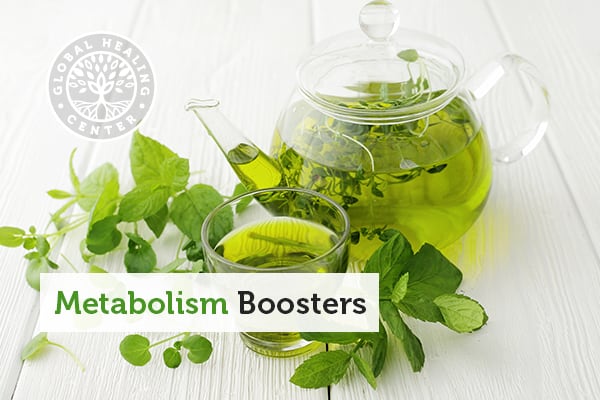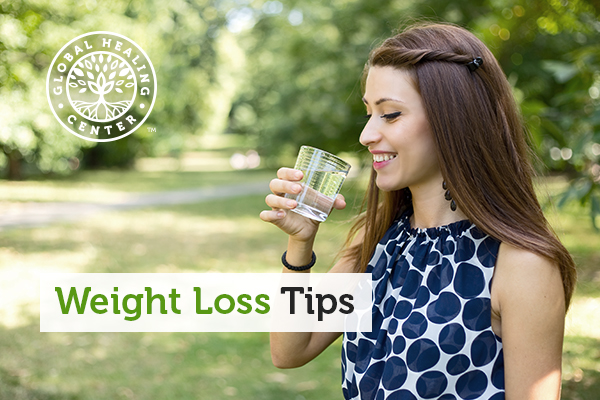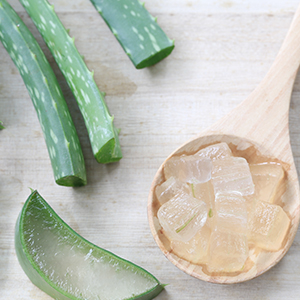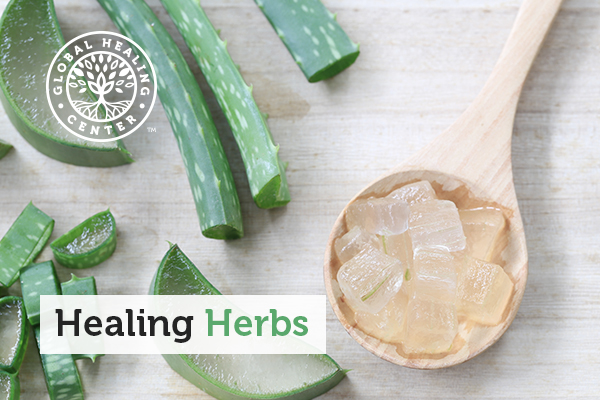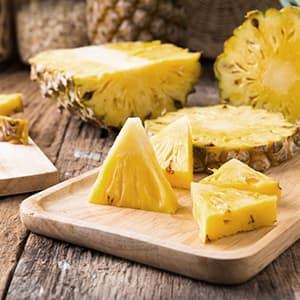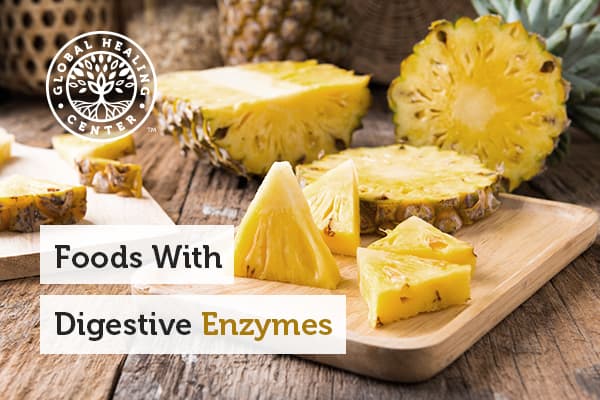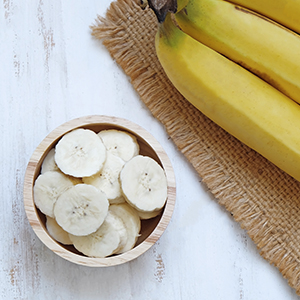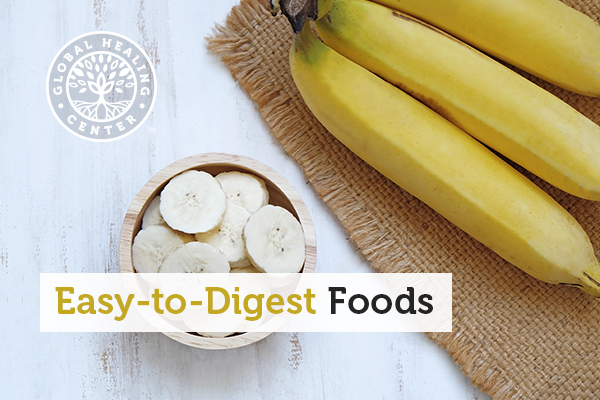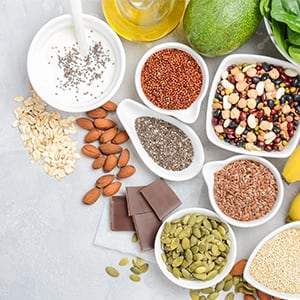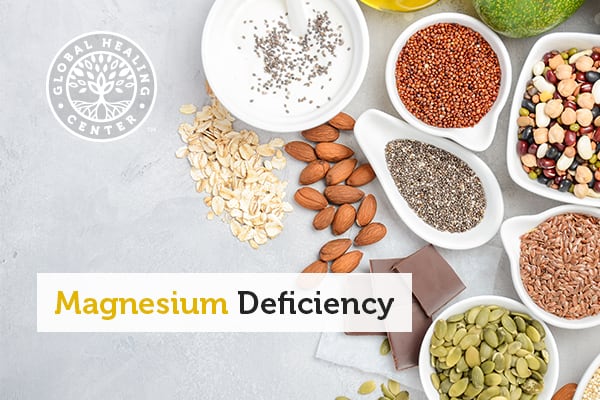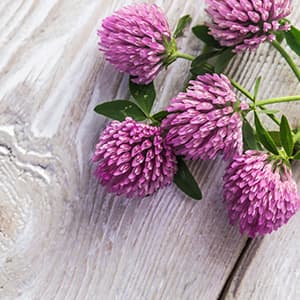

Finding a three-leaf clover may bring good luck, but taking red clover as a healing herb may bring even better fortune!
People have appreciated the therapeutic qualities of the red clover's pink and red-hued blossom for generations. Women, in particular, have passed down its secrets as a remedy for feminine issues, whether premenstrual syndrome or menopause symptoms.
In modern times, scientific research has backed up its traditional uses, including supporting bone strength, blood health, hair growth, and mental wellness. For women, red clover might also offer support for symptoms of menopause; for men, it's believed to encourage a healthy prostate.
What Is Red Clover?
Red clover (Trifolium pratense) — also known as cow clover, meadow clover, or wild clover — is a legume found in Europe, Western Asia, and northwest Africa.[1] Red clover contains isoflavones. Isoflavones are a type of phytoestrogens, which are chemicals that are similar to the hormone estrogen. Although this may provide the most significant benefits to women, red clover has a lot to offer for men's health as well.[2, 3]
Red Clover Benefits & Uses
People have traditionally used red clover as a remedy for ailments like asthma, whooping cough, skin sores, indigestion, gout, and even serious, fatal illnesses. Clover flowers and leaves are edible, so people may add them to salads, or brew them in hot tea. You can add ground red clover flowers to your bathwater to soothe itchy skin, or apply it topically in a salve. Many people take it in a capsule or liquid extract form. Below are some of the best-documented benefits.
Reduces Symptoms of Menopause
Promising research suggests that red clover can help menopausal women.[4, 5] Menopause, the cessation of menstrual cycles, causes physical changes including interrupted sleep, dry skin, vaginal dryness, weight gain or loss, and hot flashes. Like vitamin E and sage, studies suggest that red clover may reduce the number of hot flashes women experience and help with other menopausal symptoms.[4, 6] As a bonus, red clover may also boost mood and libido in women!
Improves Bone Strength
With age comes a loss of bone density. It can affect both genders but, due to hormonal changes, it's particularly common in post-menopausal women.[7] Hormone replacement therapy (HRT) aims to prevent bone loss and osteoporosis, but studies indicate that it brings an increased risk of breast cancer and heart disease.[8] Red clover, in comparison, improves bone mineral content and strength — without the adverse health effects.[9, 10]
Promotes Skin Health
Your skin is your largest organ. Because it sits on the outside of your body, skin is vulnerable to damaging elements in the environment, like the drying effects of sun exposure, heating, and even air conditioning. Taken orally or applied topically to the skin, red clover can soothe and ease various conditions and promote a healthy, normal-looking complexion.[11] Studies suggest that, when taken in a capsule, it can improve skin texture and moisture levels, as well as boost scalp health.[11]
Encourages Normal Cholesterol Levels
High cholesterol can lead to fatty deposits in your artery walls, increasing your risk of heart attack and stroke. Red clover's tendency to encourage balanced cholesterol levels makes it helpful for heart health. A prominent study found that men's bad (LDL) cholesterol levels declined significantly from taking red clover, but that women's cholesterol levels did not respond.[3] This discovery led researchers to hypothesize that previous studies that found "no link" between red clover and cholesterol was due to female test subjects skewing the overall results.
Helps Heart Health
In addition to its cholesterol-normalizing effect, red clover supports heart health by promoting normal blood pressure levels. If left unchecked, high blood pressure can lead to blood clots and even stroke. But studies suggest that red clover supplementation may normalize blood pressure. Further, red clover may thin the blood — this helps prevent blood clotting that can lead to stroke.[12] This "power flower" even has protective properties that help guard against serious and fatal cardiovascular diseases.[13]
Promotes a Happy Mood
Red clover is one of many healing herbs that has been analyzed for its effects on anxiety and depression. One study found improvements in mood in more than 75 percent of women who took red clover extract.[14] Another review of studies on herbal remedies for mental wellness (including red clover, kava, and fennel) revealed promising results for red clover. Clover flowers are a natural mood enhancer and helped ease anxiety in several studies.[15]
Supports Prostate Health
It might seem like many of the benefits of red clover are for women only, but this little botanical offers big benefits for men's health as well. Prostate-specific antigens (PSA) are proteins that the prostate gland produces. An increase in their number can suggest a range of prostate complications, including enlargement or inflammation of the gland or even serious illnesses.[16] In one study, men who took red clover extract saw their PSAs decrease by more than 30 percent.[17] Prostate function improved in these men without any adverse side effects.
May Help Male Pattern Baldness
Many men have "pattern baldness," a genetic condition where men lose their hair in a certain pattern that typically affects the front and top of the head. This is different from alopecia, which is hair loss that occurs all over the head and affects both men and women.
In one small but promising study, men applied cream with both red clover and a "biomimetic peptide" (compounds with identical amino acid sequences to those produced in the body) for four months.[18] The red clover-peptide cream increased hair growth more than the placebo cream. The scientists deduced that it helped grow hair by stimulating protein creation in the "extracellular matrix" where hair grows from and by reducing redness and swelling within the hair follicles.
How to Make Red Clover Tea
Herbal tea is an easy way to enjoy red clover. You can purchase ready-to-brew red clover tea bags or make your own — which is a simple process.
Ingredients
- Red clover flowers, dried
- Hot water
- Raw local honey
Directions
- Add one tablespoon of red clover flowers to a make-your-own teabag or metal mesh tea infuser.
- Pour boiling water into a teacup with the red clover teabag (or mesh ball) and steep for 15 minutes.
- Sweeten with honey, if desired.
You can also add red clover flowers directly to boiling water and strain before drinking. Enjoy red clover tea up to two or three times per day.
Precautions & Side Effects
Natural remedies can seem harmless, but they have the potential to interact with medications, supplements, and some health conditions. For example, red clover tea can soothe menstrual cramps since it acts as a uterine stimulant, but for this very reason, it should never be used by pregnant women as it can increase the risk of miscarriage.
Similarly, breastfeeding women should avoid using red clover. As a phytoestrogen, red clover mimics hormones, and should therefore not be taken by anyone diagnosed with hormone-sensitive conditions such as breast cancer, uterine or ovarian cancer, endometriosis, or uterine fibroids without instruction from a healthcare provider.[1]
Points to Remember
The red clover plant offers many therapeutic qualities and can ease the symptoms of many conditions. From mental wellness to heart health, red clover has many applications. In women, red clover soothes menopause symptoms by improving bone density and reducing hot flashes. In both men and woman, red clover promotes normal blood cholesterol and blood pressure. It also promotes a positive mood. For men, red clover seems to have positive effects on male pattern baldness and prostate health.
Have you used red clover? What insight can you provide? Leave a comment below and share your experience with us.
The post Red Clover Benefits for Menopause, Bone Health, & More appeared first on Dr. Group's Healthy Living Articles.
source https://www.globalhealingcenter.com/natural-health/red-clover/
